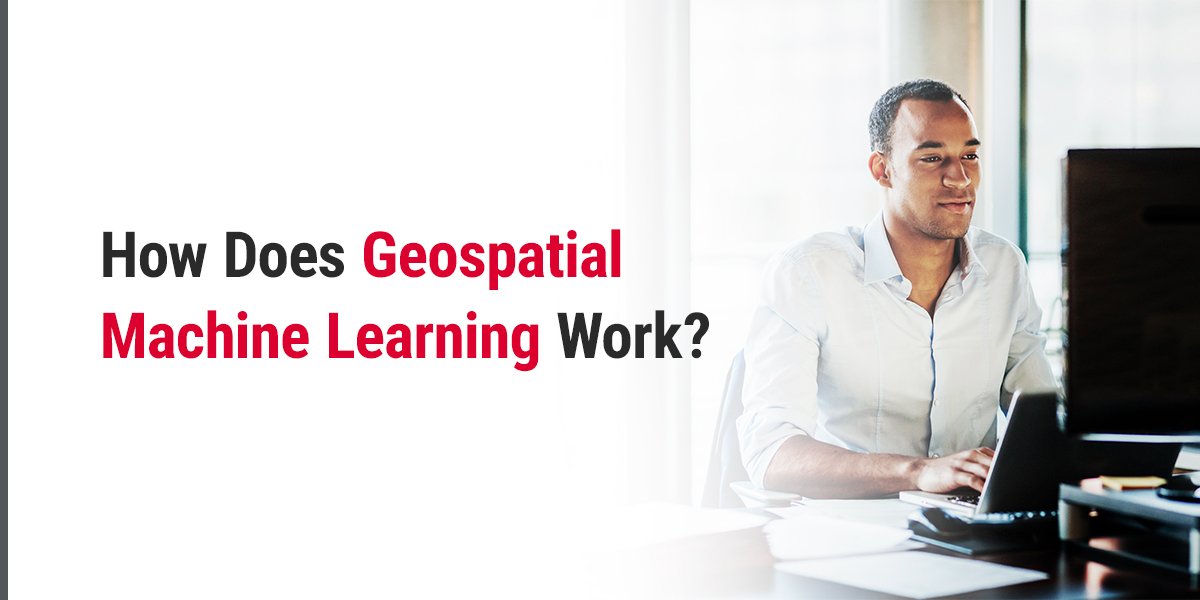How Does Geospatial Machine Learning Work?
/When your government agency or commercial business is looking to discover new insights from big data, machine learning is the answer. Artificial intelligence (AI) technology has exploded in recent years. These advances have paved the way for machine learning. The various types of AI involved in machine learning use special algorithms to increase the process' data collection accuracy and make more precise predictions about future data without needing manual programming.
Geospatial machine learning, also known as geospatial deep learning, takes the concept mentioned above and attaches it to data and outcomes with geographical components. As you'll see in the following sections, this unique form of AI has many benefits that can help take your group's data collection and predictions to the next level. Discover how machine learning works — specifically machine learning using geographic information system (GIS).
How Machine Learning Works
At GeoDecisions, we classify geospatial machine learning under the umbrella of Advanced Analytics. Machine learning uses special formulas to process information to create a usable output of data that can aid in predictions and provide insight into current affairs. The simplest form of geospatial machine learning uses gazetteers -- a geographic index or dictionary -- to associate data with a place. When you add other geospatial components to this AI technology, you can begin gaining insights into specific areas to obtain critical information about your current subject matter.
As you dive into learning more about how machine learning works, you'll come across two types: supervised and unsupervised learning. Supervised learning trains models on known output and input data for future predictions. Unsupervised learning is useful for finding hidden patterns or structures about the input data fed to it. Let's take a closer look at these two types of machine learning.
Supervised Learning
Supervised learning creates a model out of data to make predictions using evidence in the face of uncertainty. To utilize a supervised learning algorithm for machine learning, you'll feed the algorithm known input and output data, which it will study to make predictions when receiving newly integrated information. Think of supervised learning like this: A led to B before, so this time, C could lead to D. The algorithm sees how a known input relates to a known output. It then makes predictions when receiving new, related data.
The following are the two types of supervised learning techniques used to develop machine learning models:
Classification techniques: Classification techniques classify and organize input data into unique categories. This form of supervised learning can help predict slight, discreet responses. These responses range from discovering if an email is spam or genuine to knowing whether a tumor is benign or cancerous.
Regression techniques: Regression techniques can predict continuous responses, like temperature changes or power demand fluctuations. You'll want to use regression techniques for machine learning if your input data is ranged or if you're looking for a real-number response, like temperature or the life cycle of a piece of machinery.
Unsupervised Learning
Unsupervised machine learning finds intrinsic structures and hidden patterns within the data fed to its algorithm. You can use unsupervised learning to draw inferences from data sets that consist of input data without any labeled responses. Then, based on what the AI does with the data, you can discover a previously unknown pattern within the information that can shed light on your subject.
One of the most common techniques of unsupervised learning is "clustering." People use clustering as a form of exploratory data analysis for finding patterns hidden within data groupings. You can see an example of this type of AI technology in action with cellphone companies. If a cellphone company is looking to optimize the building locations for their cellphone towers, they can use unsupervised machine learning to find an estimate of the number of people who rely on their towers in a given area.
Since a person's cellphone can only communicate with one tower at any given moment, the team can use clustering algorithms to find the best location for their cell towers to get the most optimal signal receptions for groups — or clusters — of their customers.
Applications of Machine Learning in Geospatial Solutions
GIS, a specific type of geospatial technology, also utilizes machine learning. Machine learning in GIS has grown in popularity and usability in recent decades. Today, using data with geographical components to make predictions is an invaluable tool to have at your disposal. This is true whether you're running a small business or operating a large-scale government agency. Artificial intelligence in GIS is all around you. Knowing how to tap into that realm of data processing and prediction can help you make accurate, beneficial predictions.
Here are some applications that show how GIS has picked up on machine learning:
Classification: With classification, you can create visual layers of land cover separated by your chosen classifications. Doing so can give you a better understanding of the land you're observing. More specifically, you can enjoy the results of image classification in GIS. Your AI can process images from the land and categorize similar images to give you greater insight into your area, like the number of homeowners with pools or the number of houses with detached garages.
Clusters: If you have a lot of input data to analyze, clusters are one of the best ways to start. They can help you categorize specific areas of the land for population, temperature, home features, and more. With clusters, you can get to the heart of the matter by separating useful data from empty sections of the land.
Geographically weighted regression: This form of machine learning in GIS lets you use geography as the source of calibration for all factors that help you predict future outcomes. For instance, you can see a visual representation of how temperature has changed in your city over the course of previous years to help you prepare for specific weather patterns in the years to come. You can also find areas near you where inclement weather has hit the hardest.
Contact GeoDecisions for Help Implementing Geospatial Machine Learning for Your Business or Organization
The professional team at GeoDecisions is ready to help you implement geospatial machine learning in your business using geospatial technology. We hire and cultivate the best talent in the industry to provide you with the best services possible across various and diverse industries. Our comprehensive location-based solutions and cutting-edge geospatial products are sure to help you attain the information and data you need to take your organization to the next level.
Contact us today for more information about how we can help you achieve success with geospatial solutions. We look forward to partnering with you.








